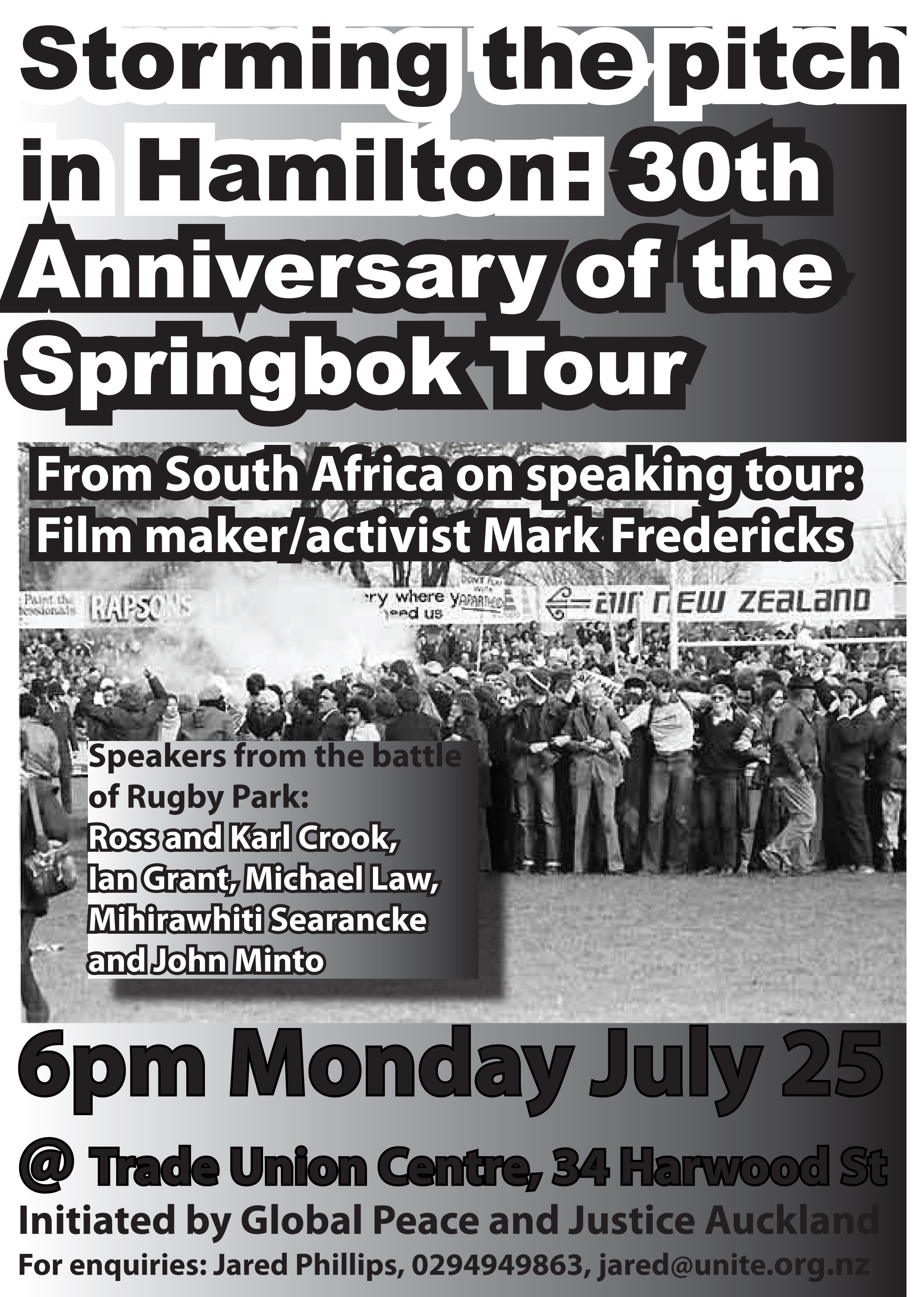Marika Pratley , PFLP Solidarity Campaign Coordinator for Wellington and member of Vic Palestine Group
Over August Vic Palestine Group organised a series of events to create awareness and build support around Victoria University and Wellington for the Palestinian struggle. This included a film screening of Occupation 101, a Student Representative Council (SRC) on the right to education for Palestinians, a panel discussion on Israel and Palestine, and a fundraising gig to prepare for the photography exhibition “Unrecognised”, which is opened on Friday 19 August. Despite Zionists ripping down posters in an attempt to censor the campaign, there has been strong support and all events were well attended.
The SRC happened on the 29th of July in the Victorai University student union building, with over 140 people. The motion was put forward: “To affiliate to the Right to Education Campaign at Birzeit University as a public show of solidarity and support to all Palestinian students and teachers who are struggling to live,work and study under the illegal Israeli occupation.”, as part of the right2edu campaign*
John Minto from GPJA in Auckland was there to talk in support of the motion, and referenced the struggle of abolishing apartheid in South Africa as a reason for supporting the issue. There were also speakers from Vic Palestine, the Greens and other radical left organizations on campus. Debate on the motion was based mostly on people not understanding the need for international solidarity, rather than being Zionist supporters. However the outcome was an overwhelming majority of students in support of the right2edu campaign, and the motion was passed.
The SRC was followed by a panel in the first week of August. Nigel Parsons, a Political Scientist from Massey University opened the panel by discussing the Israel Palestine situation. Dr. Parsons used Foucault’s theory of Bio-politics as a basis fo discussing how the state functions in controlling people’s lives. He then proceeded to apply this through historical development of Israel, and how this control has impacted on the Palestinians as invidividuals and their community as a whole. He went onto discuss how the Oslo agreement relied on incorporating the PLO, leading to the Palestinian Authorities controlling their own resistance, and allowing for the development of settlements in the West Bank. He ended his talk pointing out that when demanding for ‘the right of state’ for Palestinians, its absolutely essential to consider what this means in practice, and what ‘type’ of state the Palestinians would be demanding.
This was followed by Hone Fowler from Kia Ora Gaza. He gave a skype presentation of photos from the Kia Ora Gaza convoy that visited Palestine in December last year, with other international organizations. Kia Ora Gaza are organising another group to go at the end of 2011 and are looking for volunteers.
The final part of the panel was presented by Nadia Rhiannon from Vic Palestine. She focused her talk on the experiences of Palestinian youth, and how they relate to the occupation. This included accounts of people in Palestine as well as her own experiences, being apart of the Palestinian diaspora that were born and raised outside of Palestine. She included example of how her cousin fell in love with an Israeli Conscientious objector, and what it feels like to have a displaced identity due to the denial of rights for the Palestinian community.
The final part of the Palestine Solidarity fortnight was a fundraising gig at Garett street in Wellington. This was done on behalf of the Concerned Citizens, to fundraise for a photo exhibition, which is intended to raise awareness of the UN meeting in September, which will decide whether or not Palestine will be recognized as a state. The photo exhibition is opening tonight in Wellington, and will be in the following cities on these dates.
Wellington – Garrett Street: 19th – 21st August
Dunedin – Tangente Cafe: 19th – 21st August
Hamilton – The Void: 19th – 21st August
Whanganui – The Arc Theatre: 19th – 21st August
Auckland – Te Karanga Gallery: 22nd August – 1st September
Gisborne – Dome Cinema: date TBC
East London (South Africa) – Nelson Mandela Metropolitan University: August-September
*Further information can be found at http://right2edu.birzeit.edu/
Workers Party news and activities from around the country
By writers for The Spark
Workers Party members and branches were active in a range of events in July. In mid-July the Wellington branch had a good independent presence on semester two orientation day at Victoria University. This led into another event on Sunday July 17 – the Big Left Radical Fair – which was held at Crossways Community Centre in Mt. Victoria, Wellington. Workers Party member Joel Cosgrove who has helped to form ‘Mutiny’ – a local left networking group – was a key organiser of this event. It was attended by approximately 200+ people and 15 local organisations, including Palestine solidarity groups (Popular Front for the Liberation of Palestine Solidarity Campaign, Wellington Palestine Group, and Students for Justice in Palestine), climate change groups, and other Marxist and anarchist groups.
For many of the people who attended this event it was their first exposure to radical politics. Cosgrove gave a speech on the topic ‘What is the Workers Party?’ The Queers Avengers – a recently formed GLBT group in which Workers Party members are participating – was another organisation that was represented at the fair (see interview page 8).
Also on Sunday July 17 Workers Party members in Hamilton and Auckland, plus party contacts/supporters, met for a day of study and political discussion. For the first part of the day the group studied a small work by American Marxist leader James P. Cannon. This was followed by an appraisal of the situation of the Workers Party in New Zealand and subsequent discussion. Time was assigned for the Mana Party/Movement to be discussed in the final session for the day. This was a serious political discussion about the political nature of the Mana Party and its class composition. The discussion also touched on aspects of Marxism and Maori liberation. It was very interactive as between six and eight young Mana activists asked if they could join in the discussion.

In Auckland and Hamilton Workers Party members have become involved in the Mana Party/Mana movement. In June of this year Workers Party members resolved that Mana is a Maori-led working class movement that our members would engage with in a constructive manner. In Auckland that has meant door-knocking and contributing towards policy ideas. In Hamilton Workers Party members and some rank-and-file workers are going about forming a workers’/socialist branch in Hamilton West with a view and proposal to look after Mana activity on a weekly basis at the Frankton markets and as such have been involved in Mana Hauraki/Waikato formative meetings so far, with one member being elected to the interim committee of that branch. Workers Party members in Hamilton also helped to organise for a GPJA-initiated (Global Peace and Justice Auckland) public meeting at the 30th anniversary of the anti-apartheid protest in Hamilton which stopped the game between the All Blacks and South Africa.
Auckland activist and musician Matt Billington played his Myth of Democracy acoustic set in Hamilton as a fundraiser for the Workers Party.
Byron Clarke has again been elected as branch organiser for the Workers Party’s Christchurch branch. Activity in Christchurch has continued to be limited because of the earthquakes and the heavy snowfall in the area.
Links to UK left analysis of the riots
The following is a small set of articles about the England riots published by Marxist organisations in the UK.
Committee for a Workers International (socialistworld.net): Inner cities erupt (10/8/11)
http://www.socialistworld.net/doc/5221
Socialist Worker online: Reports from the urban revolt spreading across Britain (10/8/11)
http://www.socialistworker.co.uk/art.php?id=25694
Revolutionary Communist Group: Eyewitness report of the Manchester uprising, 9 August 2011 (10/8/11)
http://www.revolutionarycommunist.org/index.php?option=com_content&view=article&id=2291:eyewitness-report-of-the-manchester-uprising-9-august-2011&catid=82:britain&Itemid=87
Committee for a Workers International (socialistworld.net): Tottenham riots (8/8/11)
http://www.socialistworld.net/doc/5219
London Burning: The truth about the riots
Large scale riots have spread through several cities of England in the past few days. Whilst much of the mainstream media has focussed on looting, some media reports – particularly those containing interviews – have shown some of the social context giving rise to the riots, including poverty and police brutality. The following links were compiled by Alastair Reith.
[youtube=http://www.youtube.com/watch?v=3juq9nPU-v0]
[youtube=http://www.youtube.com/watch?v=CJQHWwEpwAY&feature=related]
Local and international events show need to unite against racism and defend migrant workers
This article, compiled by writers for The Spark, looks at two anti-migrant events that occurred in July 2011 and asserts the necessity of defending migrant workers and advancing the socialist principle of open borders for working people.
Prime Minister John Key last month displayed an openly hostile attitude towards asylum seekers. The Elysia was carrying more than eighty Tamil asylum seekers who were detained by Indonesian maritime authorities near Sumatra. Many of those on the boat were videoed with hand written signs and New Zealand flags signaling that New Zealand is a desirable destination for them.
Key stated blankly, “Our very simple message is they are not welcome”. He continued, “It confirms what I’ve been saying for some time; it’s only a matter of time before large vessels, steel-hulled vessels capable of navigating their way to New Zealand… or far away parts of the world would try to make their way here. They would not be allowed into New Zealand.”
Key’s uncompromising position went further than other mainstream politicians – such as former Prime Minister Helen Clark and Key’s own immigration Minister Jonathon Coleman – who both asserted that it’s unlikely that such boats as the Elysia could make it down to New Zealand. It’s likely that Key’s position was driven by electoralism and an attempt to galvanise amongst non-liberal voters.
Some commentators though like to portray New Zealand as fair and decent. The Helen Clark-led government won some liberal sympathy when New Zealand took in some of the asylum seekers involved in the Tampa refugee ‘crisis’ in 2001. Such liberal sympathy towards that government was misplaced. In parts of Australia refugees are being kept in inhumane conditions for years in detention centers. It’s both morally deplorable and against the interests of working people. But the reality in 2001 and today is that the New Zealand government is in many respects worse than others. It accepts less asylum seekers than does Australia. It has a commitment to the UN to take up to only 750 refugees per year, a comparatively small number, and even then it usually accepts less.
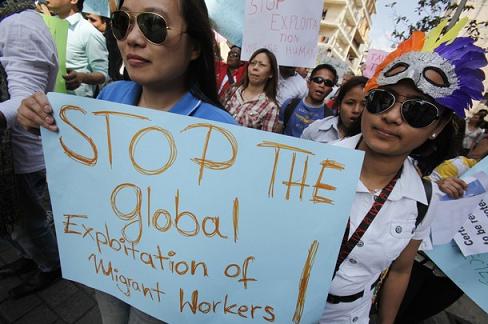
Whilst New Zealand does have a tradition of deep conservatism, it doesn’t have strong traditions of fascism or right-wing extremism. The presence of the far-right in Europe has been highlighted by the terrible events in Norway.
The bombing of government buildings in Oslo which killed seven people was carried-out by right-wing extremist Anders Behring Brevik as a decoy to distract authorities whilst he went about massacring 85 young people and injuring a further 67 at a social democratic youth conference on Utoya Island. Being a right-wing extremist, he blamed the social democratic youth for contributing to what called ‘cultural Marxism’ and ‘Islamic colonisation’. Brevik’s ideology appears to be a blend of rightist conservatism and Nazism.
It is said that Brevik’s careful planning of the attack, including the financing of the attack, was carried out over a number years. This shows that he was a focused right-wing extremist, and it wasn’t the case that he is simply psychopathic. Whilst Brevik’s action is amongst the most extreme carried out by far-rightists in Europe in the post-war period, it shouldn’t be seen as a one-off act of violence.
Far-right activity carried out by boneheads and more organised right-extremists regularly occurs in Europe and in Russia. It consists of violence towards immigrants, leftists, and intellectuals, and has resulted in murders of immigrants. Organised groups on the far-right in Russia have achieved the capacity to execute people in the legal system who have prosecuted or convicted far-rightists.
What should be taken from both centre-right politicians like John Key and from far-rightists who are galaxies to the right of the political centre, is that the most predominant form of racism today is contained in theories against immigration. John Key displays none of the signs of a typical conservative racist. He works with the Maori Party and shortly before the Elysia asylum seeker saga he was touring India participating in sound-bite-sized activities which he probably hopes will shore-up support amongst conservative Indian voters in New Zealand. However, what we’ve seen from the ruling class in New Zealand is that it’s always at the ready to adjust its position on migrants when the economy contracts. Europe, which obviously doesn’t have the type of insulation as does New Zealand against the global financial crisis, is seeing heightened activity from the far-right. As Socialists, no matter what level of persecution is being meted out, we stand up for migrant workers and argue for them to have full access, full opportunity, and no lesser wages, conditions, or income than New Zealand-born citizens.
Read the August issue of The Spark here
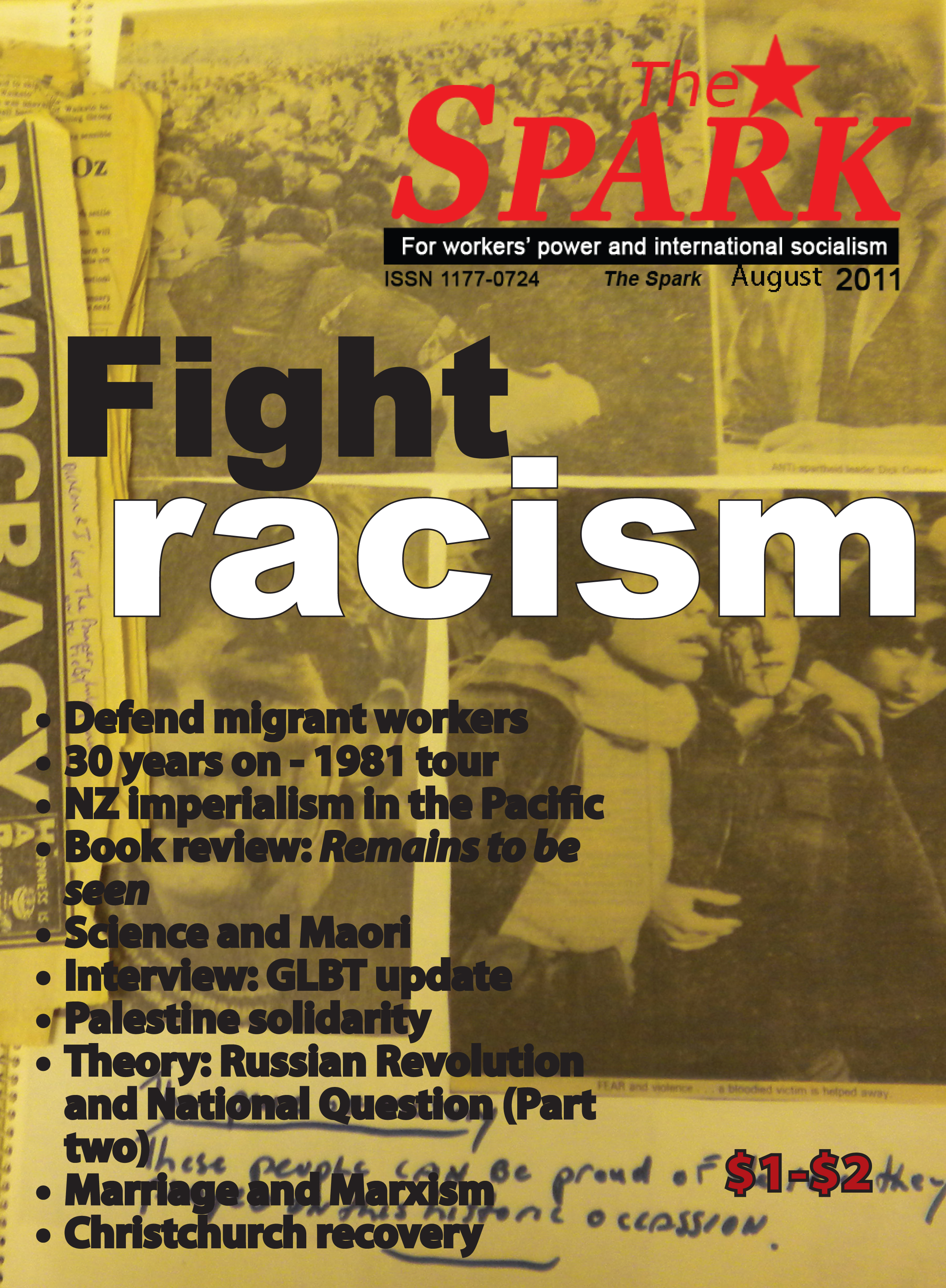 On top of normal sales and subscription copies Workers Party members sold an additional 50 copies of the July issue of The Spark at a number of one-off events in Auckland, Hamilton and Wellington (see page 6 for an account of those activities).
On top of normal sales and subscription copies Workers Party members sold an additional 50 copies of the July issue of The Spark at a number of one-off events in Auckland, Hamilton and Wellington (see page 6 for an account of those activities).
This month’s issue includes commentary on the Christchurch rebuild, along with articles on a broad set of topics ranging from Palestinian liberation to the 30th anniversary of the protests against the 1981 Springbok tour. The issue concludes with the second part of John Riddell s article on the Russian revolution and the national question. In next month’s issue we will begin a series of articles relating to the upcoming general election.
Click here for the August issue PDF
Class imbalance will determine nature of Christchurch recovery
Byron Clark, Christchurch branch organiser for Workers Party
The public consultation for the rebuild of central Christchurch – done though a combination of public meetings and the web 2.0 ‘Share an Idea’ website has thrown up some great plans. The summary of submitted transport ideas outlines a walkable central city with greater cycle facilities, integrated public transport with a central hub, and surprisingly for a city with one of the worlds highest car ownership rates, talk of a car-free central business district like some European cities are heading toward. Is that what’s going to happen though? Architect Ian Athfield who was appointed the city’s architectural ambassador after the September 4 earthquake, has told The Press that his bottom line for the rebuild was “no one-way streets and no unnecessary buses through the city”. Mayor Bob Parker said he has”lots of sympathy” for Athfield’s view.

Continue reading “Class imbalance will determine nature of Christchurch recovery”
Science, technology, and Maori
By Mike Kay, Workers Party
The ACT party receives little support from the actual capitalist class, therefore we argue that opposing Act (on the basis that they appear to be the worst of the bunch) should not be a key focus of activity for working class and radical activists. But their latest advert alleging “Maori privilege” has shone a light on some of the racist attitudes still lingering in New Zealand society.
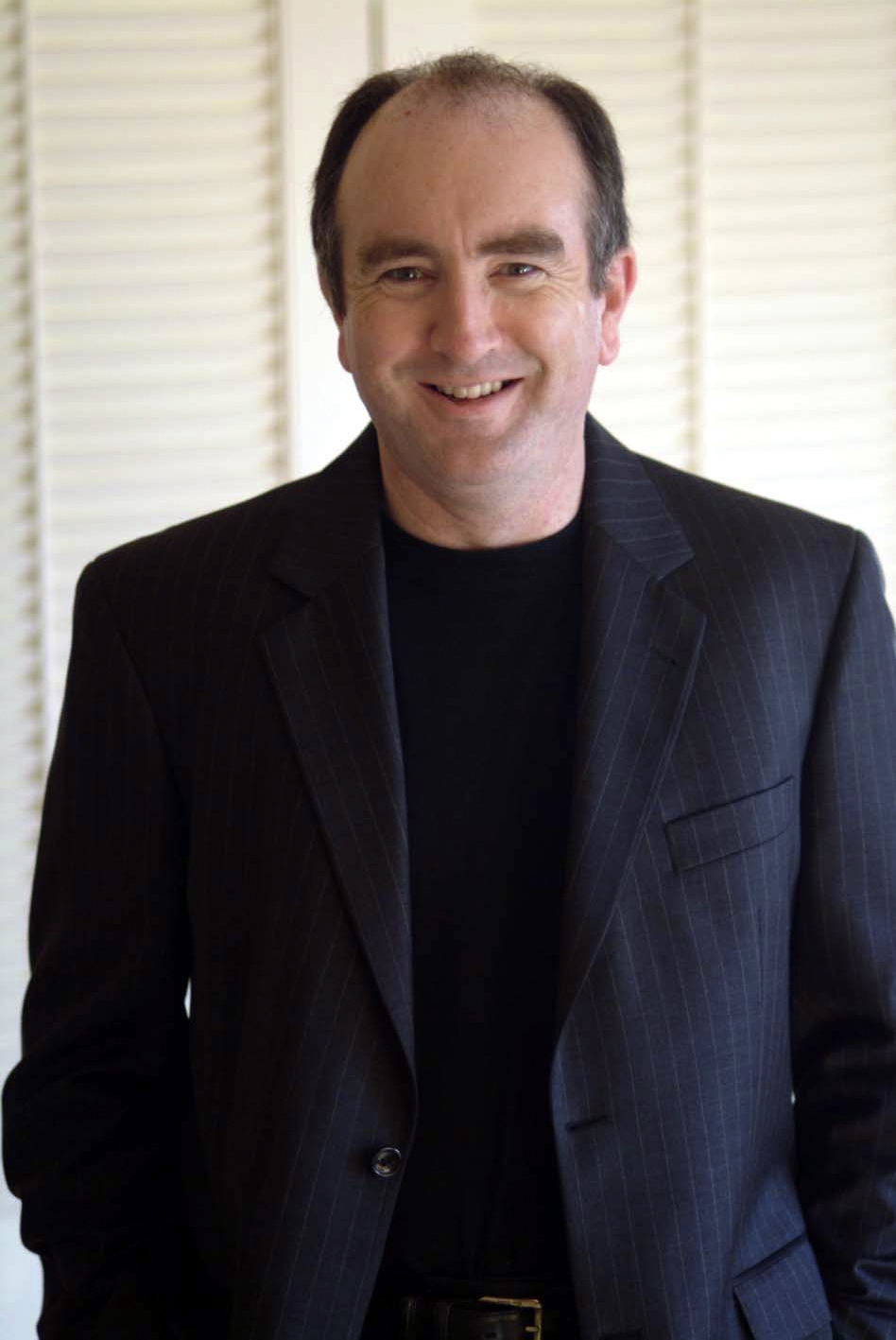
ACT’s Marketing director John Ansell, quit his job with the comment: “These guys (Maori) have gone from the Stone Age to the Space Age in 150 years and haven’t said thanks. That’s the nature of the thing. In Maori world, if one tribe conquers another you eat the guys’ eyeballs. The Brits were pretty civilised by that standard.”
It’s hard to know where to begin with a comment like that. The British ruling class built an empire from the profits of the slave trade on which the sun never set and the blood never dried. That they called civilisation. Meanwhile Maori, along with many other indigenous people, have long been painted as cannibalistic savages. The academic Paul Moon’s recent book alleges that cannibalism in traditional Maori society was a common practice. However, the science tells a different story. Ian Barber of Otago University’s Department of Anthropology stated: “I’m not a cannibalism denier. I think there’s good traditional and historical evidence for a limited form of cannibalism. But what we don’t find in the archaeological record is clear or unequivocal evidence of any kind of widespread or comprehensive cannibalism that would involve the consumption and preparation of significant amounts of human flesh.” (NZ Listener 26/2/11)
But the idea that Maori should be grateful for “Pakeha technology” is probably the most commonplace, and not just amongst rednecks.
Recalling his discussions with his mate Aussie Huata, Dun Mihaka wrote in 1989: “The phenomena of science and technology are not, contrary to popular belief, the sole preserve of the Pakeha, or anyone else for that matter. Rather, it is the cumulative effect of the most advanced ideas that all mankind has gathered from the beginning of time… all peoples, without exception, contribute to it… The two ways by which we all do this, is by way of the hand or by way of the head. In some cases many did both. In other words you either contribute to it by way of the intellect or you contribute to it by way of your labour power. The example I regularly used to illustrate this point was the case of the work that Te Whiti o Rongomai, and his pacifist land rights followers from Taranaki did on the Otago Peninsular. I would say that while I did not dispute the fact that the engineering plan for the road running from Anderson’s Bay out to the Kaik arrived on the same ship that brought the whiteman, the pox, the bible, modern science and technology… the labour-power, the blood, sweat and tears so to speak, that made that engineering plan into a reality was to work of Maori slave labour. I have still to meet someone who, using this method of reasoning, has been able to effectively refute this statement of fact.” Continue reading “Science, technology, and Maori”
Thirty years on: The 1981 Springbok tour and protest today
The following article is written by John Edmundson, a member of the production team of The Spark and Christchurch Branch of the Workers Party. John was highly active in the anti-apartheid movement and was arrested during the Gisborne match of the 1981 tour.
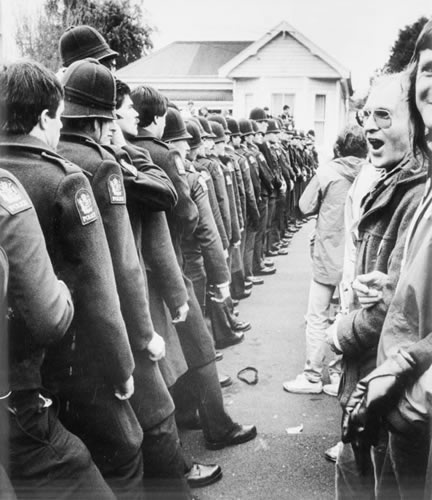 This year New Zealand hosts the Rugby World Cup and TV viewers all over the world will be getting up at all hours of the morning to watch the games. Something similar was happening exactly thirty years ago this month, when South Africa’s Springboks accepted an invitation from the New Zealand Rugby Football Union (NZRFU) to tour this country. The 1981 Springbok Tour was a momentous time in New Zealand’s history and has been the subject of much debate since. It is sufficiently significant that it is taught in school social studies and history courses as one of the defining and formative episodes in New Zealand’s history.
This year New Zealand hosts the Rugby World Cup and TV viewers all over the world will be getting up at all hours of the morning to watch the games. Something similar was happening exactly thirty years ago this month, when South Africa’s Springboks accepted an invitation from the New Zealand Rugby Football Union (NZRFU) to tour this country. The 1981 Springbok Tour was a momentous time in New Zealand’s history and has been the subject of much debate since. It is sufficiently significant that it is taught in school social studies and history courses as one of the defining and formative episodes in New Zealand’s history.
Apartheid
In 1981, the apartheid system was at its vicious peak in South Africa; memories were still fresh of the 1976 Soweto uprising, when the South African security forces gunned down black school children in the streets for protesting against discriminatory schooling. South Africa was fighting a war in Namibia and was projecting its war into the “frontline states” of Angola and Mozambique with virtual impunity. For its part, the South African resistance was engaging in mass strikes, popular mass protest and a fairly limited armed struggle, primarily through the medium of the African National Congress’s (ANC) Umkhonto we Sizwe (Spear of the Nation).
The campaign to oppose the Springbok tour of New Zealand was part of a huge international campaign to isolate South Africa in every aspect of its international dealings. There was a widely supported boycott of South African exports, a campaign to prevent trade with the Republic, and a sporting and cultural boycott. In New Zealand, the campaign had really kicked off with the “No Maoris No Tour” campaigns in the 1960s, a response to the South African demand that teams touring South Africa “respect” South Africa’s apartheid system and select only white players for their national squads. South Africa’s response to that campaign was to grant “honorary white” status to Maori All Blacks, thereby allowing them to stay in the “Whites Only” team hotel, travel on the team bus etc, rather than use the inferior “Blacks Only” facilities they would normally have been restricted to. The activists leading the anti-apartheid movement saw this as mere window dressing” and argued that even a fully merit based South African team would not be sufficient to lift the boycott since the boycott was not really about sport, but a lever to use against the apartheid system as a whole. Continue reading “Thirty years on: The 1981 Springbok tour and protest today”

